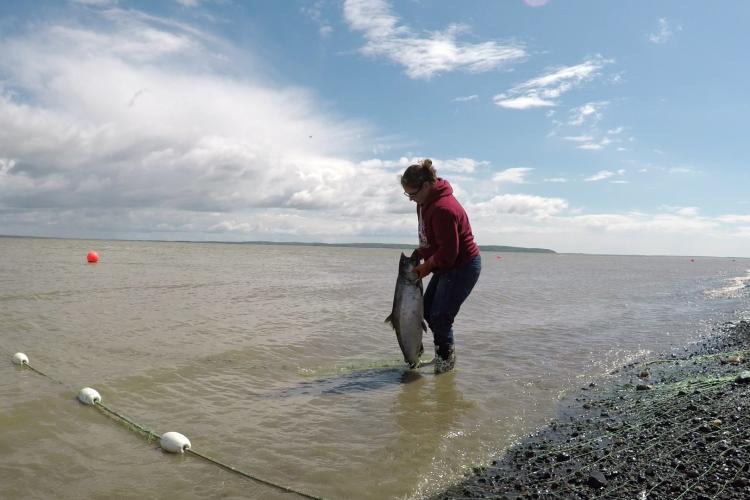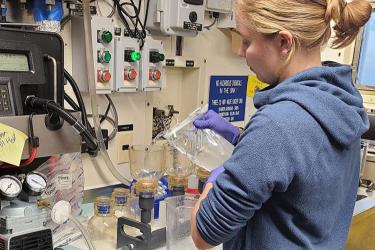During the summers of 2017 and 2018, researchers from NOAA Fisheries Alaska Fisheries Science Center visited several communities in Bristol Bay to conduct oral history interviews with women who participate in the region's commercial and subsistence set net salmon fisheries. Using oral history methods, this research explores the lived experiences of women engaged in salmon set net fishing, and how their connections to Bristol Bay and a subsistence way of life is critical to food security and cultural identity. We produced an interactive storymap to highlight the role these women play in the salmon fishery and its importance to the region as a whole.
Importance of this Study
Bristol Bay, Alaska is home to the largest wild runs of sockeye salmon in the world, as well as to the people and communities that rely on them. Each summer, salmon return from the ocean to their natal rivers and streams in the Bristol Bay watershed to spawn. These runs provide vital nutrients to the Bristol Bay ecosystem and support vibrant subsistence, sport, and commercial fisheries.
Along with providing income and food to Bristol Bay's residents, the fisheries provide opportunities for seasonal employment and income to supplement other wages and subsistence activities. Fishing also maintains family and community networks, supports cultural identity, and is deeply interwoven into a sense of place for those who live in the region.
Sense of Place is broadly defined here as “the meaning and importance of a setting held by an individual or group, based on an individual’s and group’s experience with the setting” (Stedman 2003), and refers to the place attachment associated with shared experiences, meanings, and values.
Contacts
Sarah Wise, social scientist, Economic and Social Sciences Research Program, Alaska Fisheries Science Center
Kim Sparks, social scientist, Pacific States Marine Fisheries Commission
Jean Lee, fisheries analyst, Alaska Fisheries Information Network




